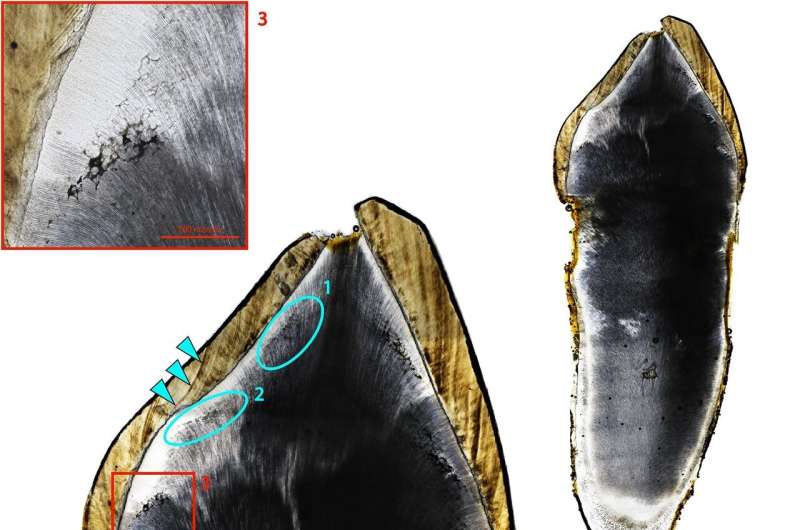This article has been reviewed according to Science X's editorial process and policies. Editors have highlighted the following attributes while ensuring the content's credibility:
fact-checked
peer-reviewed publication
trusted source
proofread
Archaeological evidence of seasonal vitamin D deficiency discovered in England

Evidence from teeth reveals that vitamin D deficiency during childhood was likely a major issue in industrialized England, according to a study published January 31, 2024 in the open-access journal PLOS ONE by Anne Marie Snoddy of the University of Otago, New Zealand and colleagues.
The 18th and 19th centuries AD were a period of industrialization and urbanization in England. This was also a time of increasing incidence of health issues like vitamin D deficiency (VDD) and associated conditions like rickets, potentially linked to changing social practices tied to class and gender.
At the cemetery site of Coach Lane in Northern England, previous work has identified rickets based on skeletal lesions. In this study, Snoddy and colleagues build upon this research with new analyses of dental tissue.
The researchers examined the teeth of 25 individuals preserved at the site. The presence of poorly mineralized dentin tissue was used as evidence for periods of VDD during childhood, and analysis of enamel peptides allowed identification of the chromosomal sex of certain of these individuals.
This analysis found that around three-quarters of examined individuals showed evidence of poor mineral metabolism during childhood, with a significantly higher incidence in males. Some individuals also showed signs of repeated annual disruptions in tooth tissue development, suggesting a seasonal disorder.
These results reveal a greater prevalence of VDD compared with previous studies relying on skeletal evidence. The high incidence of VDD in males compared with females might be related to social dynamics such as gendered work practices in industrial England.
The authors suggest that future work might expand on these results by exploring other proxies for VDD and related disorders, as well as by comparing sites in different parts of the world.
The authors add, "We found clear evidence of seasonal vitamin D deficiency in the teeth of people living in the north of England. This is exciting because it highlights that latitude and seasonal lack of sunlight was a major factor in the amount of vitamin D these people could make in their skin–it's more complicated than the factors associated with the industrial revolution like working indoors more."
More information: Vitamin D status in post-medieval Northern England: Insights from dental histology and enamel peptide analysis at Coach Lane, North Shields (AD 1711–1857), PLoS ONE (2024). DOI: 10.1371/journal.pone.0296203
Journal information: PLoS ONE
Provided by Public Library of Science




















